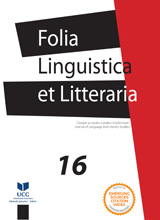THE MONKEY GIRL: FOWLER’S CHALLENGING OF URBAN DIVINANIMALITY
THE MONKEY GIRL: FOWLER’S CHALLENGING OF URBAN DIVINANIMALITY
Author(s): Vesna LopičićSubject(s): Comparative Study of Literature, Theory of Literature, American Literature
Published by: Filološki fakultet, Nikšić
Keywords: human animal; instincts; bildungsroman; twinness; animal rights; divinanimality;
Summary/Abstract: Karen Joy Fowler’s sixth novel, We Are All Completely Beside Ourselves (2013), seems to be yet another coming-of-age story depicting an American urban family coping with complex emotional problems. Rosemary, the youngest sibling, loses her sister Fern at the age of five, and her brother Lowell at the age of eleven. The troubles of her maturation are given their true reason only halfway through the book when it is revealed how her behavioral psychologist father and his supporting wife subjected Rosemary to a radical Primate experiment: she and Fern, who is a baby chimpanzee, are twinned at birth in order to compare their developmental milestones. As a bildungsroman, this novel challenges the conventional expectation for the heroine to be struggling in a relationship with another human being towards desired maturation. The subsequent separation from Fern raises the question of animal rights and reconceptualises the Family to include all Primates, if not all breathing creatures. The paper aims to explore the image of twinness with the goal of answering the question what it means to be a human animal. It will refer to Franz Kafka’s A Report for an Academy (1917) and Jacques Derrida’s The Animal That Therefore I Am (2002).
Journal: Folia Linguistica et Litteraria
- Issue Year: 2017
- Issue No: 16
- Page Range: 27-44
- Page Count: 18
- Language: English

